#Medical Camp in Punjab
Text
Preserving a Legacy of Mending: Mata Gujri Memorial Medical College
Within the heart of Punjab, in the midst of the ripe lands and dynamic culture, stands a landmark to the persevering legacy of sympathy and benefit. Welcome to Mata Gujri Dedication Medical College, an institution steeped in history and devoted to the interest of excellence in healthcare. As we dig into the wealthy tapestry of its roots, ethos, and contributions, we reveal a story of resilience, dedication, and faithful commitment to recuperating.
A Tribute to Mata Gujri:
Mata Gujri Memorial Medical College stands as a tribute to the beloved Mata Gujri, a lady of quality and ethicalness who played a pivotal role in Sikh history. As the wife of Master Tegh Bahadur and the mother of Master Gobind Singh, Mata Gujri's life was marked by sacrifice and dedication to her family and community. Her bequest of compassion and benefit proceeds to inspire generations, serving as the directing light for this regarded institution.
Origins and Foundation:
The inception of Mata Gujri Commemoration Medical College can be followed back to a vision of giving available and high-quality healthcare to the individuals of Punjab. Established by visionary pioneers and community activists, the college developed as a beacon of trust in a time stamped by constrained healthcare infrastructure and assets. Its foundation symbolised a commitment to tending to the healthcare needs of the locale and supporting the next era of medical professionals.
Maintaining Greatness in Healthcare:
At Mata Gujri Memorial Medical College, excellence isn't a fair objective; it could be a way of life. The institution is eminent for its thorough scholastic educational modules, experienced faculty, and state-of-the-art offices. From cutting-edge laboratories to progressing medical innovation, each aspect of the college is outlined to cultivate a culture of learning, development, and excellence. Students are prepared with the knowledge, aptitudes, and values essential to meet the evolving challenges of the healthcare scene.
Cultivating a Culture of Compassion:
Central to the ethos of Mata Gujri Memorial Medical College may be a deep sense of kindness and sympathy for patients. Here, healthcare isn't simply almost treating ailments; it is about healing the total individual body, intellect, and soul. A multidisciplinary group of healthcare experts, comprising doctors, nurses, advisors, and counsellors, works collaboratively to supply holistic care that addresses the special needs of each person.
Bridging Gaps in Healthcare:
Mata Gujri Memorial Medical College is committed to bridging the crevices in healthcare get to and delivery, especially in underserved communities. Through outreach programs, versatile clinics, and community wellbeing initiatives, the college amplifies its services past the limits of its campus, coming to those who are frequently marginalised and ignored. Additionally, the college places a solid emphasis on preventive care and wellbeing education, empowering people to take control of their own well-being.
Supporting Future Leaders:
The college serves as a supporting ground for another era of healthcare pioneers and trailblazers. Through comprehensive medical education programs, residency preparing, and investigating opportunities, students are prepped to be compassionate clinicians, basic scholars, and specialists of the future in their communities. Besides, the college cultivates a culture of deep rooted learning and proficient advancement, encouraging students to pursue brilliance in their chosen areas.
Commitments to Community Health:
Past its educational endeavours, Mata Gujri Commemoration Restorative College actively locks in community wellbeing activities and social welfare ventures. Whether it's organising restorative camps in rural areas, giving healthcare services to the underprivileged, or promoting open wellbeing awareness, the college remains profoundly committed to moving forward the wellbeing and well-being of the communities it serves. In doing so, it respects the bequest of Mata Gujri and embodies the Sikh standards of seva (caring benefit) and kindness.
Conclusion:
In conclusion, Mata Gujri Dedication Medical College stands as a signal of trust, mending, and benefit in Punjab. Established within the values of kindness, fabulousness, and social obligation, it proceeds to maintain the bequest of its namesake and motivate future generations of healthcare experts. Because it walks steadfastly into long run, the college remains committed to its mission of advancing healthcare, sustaining ability, and serving humanity with humility and sympathy.
#MBBS in Bihar#Study mbbs in Bihar#MBBS fees in Bihar#Best medical university in Bihar#mbbs admission in Bihar
0 notes
Link
0 notes
Text
Meet the Best Sugar Doctor in Ludhiana: World Diabetic Centre
Living with diabetes requires more than just managing blood sugar levels; it demands personalized care, expert guidance, and a supportive environment. In Ludhiana, individuals grappling with diabetes have found their ultimate ally in the World Diabetic Centre – home to the best sugar doctor in the city. Let's delve into what makes this institution stand out and why it's the go-to destination for diabetic care in Ludhiana.
The Pinnacle of Expertise: At the helm of the World Diabetic Centre is a distinguished team of medical professionals led by the Best Sugar Doctor in Ludhiana. Renowned for their expertise in diabetes management, these specialists bring a wealth of knowledge and experience to the table. With a deep understanding of the complexities of diabetes and its impact on overall health, they craft personalized treatment plans tailored to each patient's needs, ensuring optimal outcomes and improved quality of life.
Comprehensive Approach to Care: What sets the World Diabetic Centre apart is its holistic approach to diabetes care. Beyond just treating symptoms, the center addresses the root causes of the condition, focusing on lifestyle modifications, diet optimization, medication management, and emotional support. By adopting a comprehensive approach, the best sugar doctor in Ludhiana helps patients not only control their blood sugar levels but also mitigate the risk of complications and enhance their overall well-being.
Cutting-Edge Technology: Equipped with state-of-the-art technology and advanced diagnostic tools, the World Diabetic Centre empowers patients with the tools they need to monitor and manage their diabetes effectively. From blood glucose monitors to continuous glucose monitoring systems, the center leverages the latest innovations to provide accurate and real-time insights into patients' blood sugar levels, enabling timely interventions and adjustments to treatment plans.
Patient-Centric Care: At the heart of the World Diabetic Centre's philosophy is its unwavering commitment to patient-centric care. The Best Sugar Doctor in Ludhiana and the entire medical team prioritize open communication, active listening, and empathy, ensuring that patients feel heard, understood, and supported every step of the way. Through regular consultations, educational sessions, and one-on-one counseling, they empower patients to take control of their diabetes and make informed decisions about their health.
Community Engagement: Beyond its clinical services, the World Diabetic Centre is deeply engaged in community outreach initiatives aimed at raising awareness about diabetes prevention and management. Through health camps, awareness drives, and educational seminars conducted across Ludhiana, the center strives to educate individuals about the importance of early detection, lifestyle modifications, and proactive management of diabetes. By fostering a culture of prevention and empowerment, the center aims to reduce the burden of diabetes in the community.
A Beacon of Hope: In essence, the World Diabetic Centre is more than just a healthcare facility – it's a beacon of hope for individuals living with diabetes in Ludhiana. With the best sugar doctor in the city leading the charge, backed by a dedicated team of professionals and state-of-the-art infrastructure, the center offers a ray of hope to those grappling with this condition. Through personalized care, comprehensive support, and a commitment to excellence, the World Diabetic Centre continues to transform lives and inspire hope in the fight against diabetes.
Opp Octroi Post, Hambran Road, Ludhiana-141004, Punjab
(+91) 709 830 0000
0 notes
Text
Empowering Punjab's Youth: The Inspirational Story of Gandhi Group Student Union (GGSU)
Introduction: In the heart of Punjab, India, there's an organization that has been making a significant impact on the lives of people for over 20 years. The Gandhi Group Student Union, also known as GGSU, is a non-governmental organization that started its journey in 2003. Founded by the late Sarpanch Rupinder Singh Gandhi, this NGO is dedicated to helping the poor and needy and fighting for the rights of students in universities and colleges across Punjab.

A Vision of Empowerment: GGSU's story began with a noble vision, driven by Late Sarpanch Rupinder Singh Gandhi's deep sense of compassion and desire to create positive change in society. His dream was to uplift the marginalized and create a more just and equitable educational landscape in Punjab.
Empowering the Underprivileged: GGSU's impact on the lives of the underprivileged has been nothing short of remarkable. Through various initiatives, they have brought about meaningful change in the lives of countless individuals.
Education for All: GGSU believes that education is a powerful tool for transformation. To ensure that no child is deprived of education, the organization provides scholarships, study materials, and tutoring programs for students from disadvantaged backgrounds.
Health and Well-being: Good health is essential for a better future. GGSU conducts medical camps and provides healthcare services to communities in need, focusing on preventive measures and overall well-being.
Empowering Livelihoods: GGSU recognizes the importance of economic empowerment. They conduct skill development workshops and vocational training programs, helping individuals gain skills for better employment opportunities.
Championing Student Rights: One of GGSU's defining missions is to fight for the rights of students in Punjab's educational institutions. Their dedication to this cause has led to significant achievements.

Solving 3000+ Cases: GGSU has an impressive track record of successfully resolving more than 3000 cases. From unfair academic practices to discrimination, they have stood up for students and ensured justice prevails.
Advocating Policy Reforms: GGSU's relentless advocacy has led to policy changes that promote transparency, accountability, and inclusivity in colleges and universities.
Empowering Youth Voices: GGSU has empowered the youth to speak up against injustices. They encourage active participation and engagement in shaping the educational journey.

The GGSU Community: GGSU's presence extends beyond the physical realm. With an Instagram profile (@ggsu.rgws.official), they have created a digital space for people to connect and seek assistance. The responsive team ensures that support is always within reach.
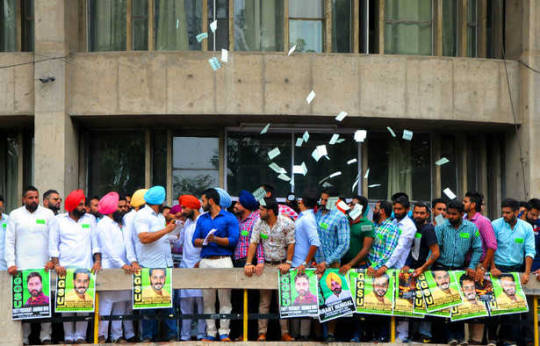
Slogan: "We Dream, We Dare & We Achieve"
Conclusion: The Gandhi Group Student Union (GGSU) has been a beacon of hope for Punjab's youth, providing support, empowerment, and advocacy for a better future. Late Sarpanch Rupinder Singh Gandhi's legacy lives on through GGSU's work, as they continue to transform lives and empower the underprivileged. With their tireless efforts, GGSU paves the way for a brighter, more inclusive, and just society for all.
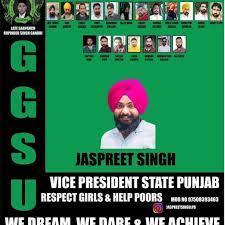
1 note
·
View note
Text
Role of NGOs in Punjab to Improve Society and Communities
NGOs in Punjab are striving to combat drug addiction and improve the lives of the underprivileged, oppressed, and exploited farmers who have small plots of land or who work in the fields of others.
Role of ActHumane to Improve Society and Communities in Punjab
The phrase "Act Humane" encapsulates both our mission and how we go about achieving it; we want to protect the environment while also ensuring that everyone has access to health, education, and employment.
We try to improve the quality of life through government-initiated schemes and benefits by organizing awareness campaigns and assisting them in putting them into action through camps conducted for those highly vulnerable people. We provide education, extra food, and medical assistance to the most disadvantaged society.
A charitable organization called Act Humane works tirelessly to help people with disabilities by offering them disability certificates, free medical care, hygiene supplies, food, and education.
By educating people about their rights and the benefits offered to them by the government and international organizations, we assist numerous groups in society. to use education to end the cycle of poverty.
To guarantee that everyone from various societal groups is aware of their rights and may take advantage of the opportunities available to them for their entire development.
NGO for Health and Education in Punjab
Everyone has a basic need for health and education, and at Act Humane, we consistently work in the health sector by organizing health awareness events and distribution events for prosthetic limbs.
We set up distribution camps for sanitary napkins and menstrual hygiene education for poor women. We also hold workshops and educational programs on health awareness, healthier living, and providing aid to others in need as well as kids in need.

NGO for Environment and Plantation in Punjab
We at Act Humane believe in living sustainably in a "green society," and for us, the term "green" connotes taking care of the environment and conserving resources for a better tomorrow. With the aid of volunteers, we are collaborating with several organizations to plant trees.
Our goal is to live in a society that we are proud of, and we can all help to do this by doing our small part to improve sustainability in our neighborhood, city, and nation.
Along with other charitable endeavors, we run campaigns to clean up the city and create a more environmentally friendly culture by educating people about how doing so will advance their country's progress.
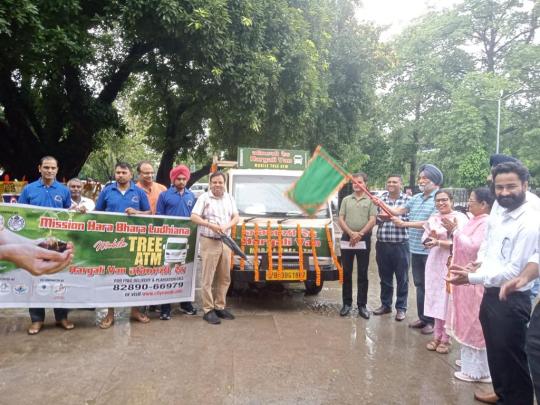
Regular Health Awareness Program
We hold educational and health awareness workshops and programs where we inform people about leading better, healthier lives and assisting underprivileged students and others. With hospitals and educational institutions, we occasionally host health and education camps.
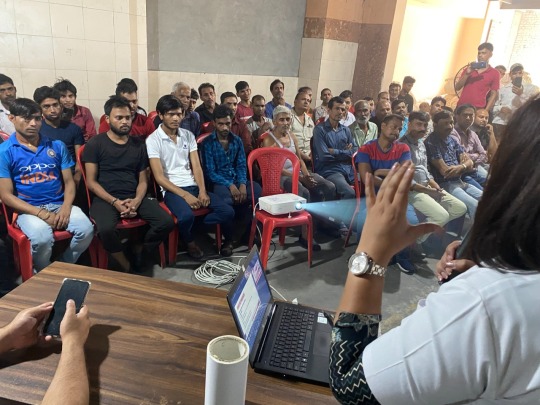
0 notes
Photo
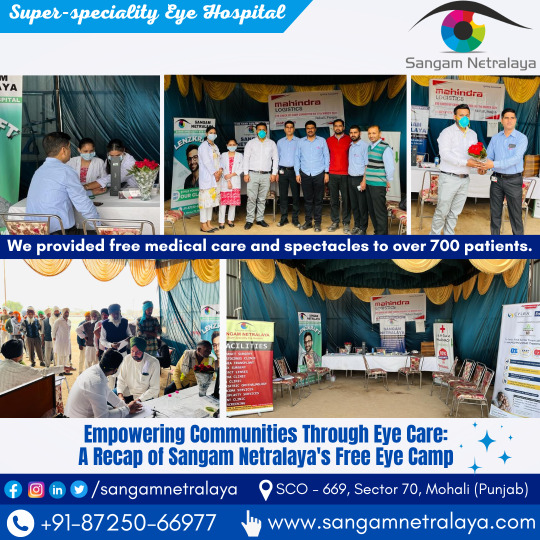
Empowering Communities Through Eye Care: A Recap of Sangam Netralaya's Eye Camp
Details: We at Sangam Netralaya recently organized an eye camp in which we provided free medical care and spectacles to over 700 patients. The camp took place at Mahindra Swaraj Division in Mohali, Punjab and aimed to empower local communities by providing access to essential eye care services. The patients who visited the camp received a comprehensive eye check-up and were given free medicines, spectacles, and referrals for further treatment if needed. Our team of medical professionals was dedicated to making a positive impact in the lives of those we serve, and we are proud of the success of this initiative. We hope to continue this mission of bringing affordable and accessible eye care to those who need it the most.
Sangam Netrayala - A Name You Can Trust
𝐖𝐡𝐚𝐭𝐬𝐀𝐩𝐩: https://wa.me/918725066977
𝐏𝐡𝐨𝐧𝐞: 08725066977
𝐄𝐦𝐚𝐢𝐥: [email protected]
𝐀𝐝𝐝𝐫𝐞𝐬𝐬: SCO 669, Sector 70, Chandigarh, Punjab 160070.
#Sangam_Netralaya #free_eye_camp #mohali #Mahindra #eyeglasses #eye_hospital #eye_specs
0 notes
Text

FREE MEDICAL CAMP | Date & Time: - 12-02-2023 - 10.00 AM to 2.00 PM
Place : SCO 100, Sec 40C, Chandigarh | M: 6280048805
Eyes: -
Dr. Varun Baweja
MBBS, DO, DNB, Trained in Micro Invasive Glaucoma
Surgery (MIGS) in the UK
Ex Fellow PGI Chd, Ex Grewal Eye Institute Chd, Ex Sohana Eye Hospital Mohali
Consultant Peterborough City Hospital, UK
Aesthetics: -
Dr. Pooja Baweja
M.B.B.S., M.D, Fellowship in Aesthetic Medicine,
Ex Consultant Neo Skin clinic Birmingham and
Huda Healthcare London
Psychiatry: -
Dr. Tarun Baweja
MBBS DPM MSc Transcultural Mental Health UK.
Ex-consultant Women and child hospital Birmingham
Ex consultant Mental Hospital Amritsar
Obs & Gynae
Dr. Namrata Baweja
M.B.B.S DNB (Obs. & gynae, GMCH SEC-32 CHD.
Fellowship minimal invasive surgery AIIMS Delhi
Female reproductive and infertility specialist
Peterborough city hospital UK
𝐁𝐚𝐰𝐞𝐣𝐚 𝐌𝐮𝐥𝐭𝐢𝐬𝐩𝐞𝐜𝐢𝐚𝐥𝐢𝐭𝐲 𝐇𝐨𝐬𝐩𝐢𝐭𝐚𝐥
Chandigarh>>
Web: - www.bawejahospitalchd.com
Call: - +91-8146622802
https://wa.me/918146622802
Address: - S.C.O 100, Sec 40-C, Chandigarh
Ropar>>
Web:- www.bawejahospital.com
Call:- 01881-500702
Address:- Ropar- 1571/39, opposite Civil Hospital, Rupnagar, Punjab 140001
punjab #haryana #chandigarh #baweja_hospital #Ropar #Rupnagar
0 notes
Text
VC OPC Inaugurates Medical Camp
VC OPC Inaugurates Medical Camp
Vice Chairperson Punjab Overseas Pakistanis Commission (OPC) Makhdoom Syed Tariq Mehmoodul Hassan Friday inaugurated a free medical camp, organised by District Overseas Pakistanis Committee Faisalabad under the supervision of District Chairman Overseas District Faisalabad Mirza Asghar.
LAHORE, (UrduPoint / Pakistan Point News – 30th Dec, 2022 ) :Vice Chairperson Punjab Overseas Pakistanis…
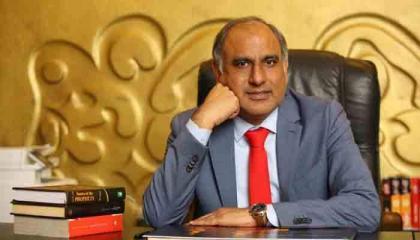
View On WordPress
0 notes
Text
Social welfare organizations should rise above party politics and work for the welfare of people: Harpal Singh Cheema
Social welfare organizations should rise above party politics and work for the welfare of people: Harpal Singh Cheema
Finance Minister Cheema visited eye medical checkup camp at village Gujran as chief guest
Dirba/Sangrur, September 28:
Punjab Finance, Planning, Excise and Taxation Minister Advocate Harpal Singh Cheema on Wednesday said that social service organizations should rise above party politics and work for the welfare of the people. He said that the Punjab government led by Chief Minister Bhagwant…

View On WordPress
0 notes
Text
PFA sets up awareness camp for students at Queen Mary College
PFA sets up awareness camp for students at Queen Mary College
LAHORE: The Punjab Food Authority (PFA) on Thursday organized a seminar and a diet awareness camp for students at Queen Mary College.
A team consisting of expert nutritionists had informed hundreds of students about the dietary guidelines after their complete medical examination and nutrition counselling. The team also conducted medical tests of visitors including students and faculty members…
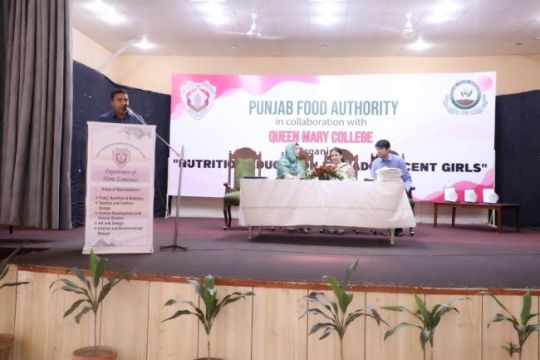
View On WordPress
0 notes
Text
PAKISTAN IS DROWNING
33 million dreams broken, 33 million hopes shattered, and 33 million futures destroyed By: Adnan Hassan Rajput (CEO - House of Sellers)
Price is Paid! (For Someone else’s Sins?)
Was it “MoonSoon”?
Was it “Global Warming”?
Was it “Climate Change”?
All the debate comes later to “Humanity”, where 1.1 Millions Homes destroyed, Infrastructure like Schools, Hospitals & Bridges shattered and Millions of Acres of Crops Swept away.
As per Today, Over 1.1 million homes have been damaged of which over 436k have been totally destroyed, and in many cases, washed away. In total 33 million people have been affected and reports suggest a third of the entire country is flooded. Around 6 million need urgent help.
Many people are living in ad hoc camps with virtually no hygiene and sanitation, very little food, and no access to medication. Official figures suggest that 1,200 people have died and 4,900 injured, but the figures are likely to be higher due to the remote nature of many villages. In finances, the damage for Pakistan is “Far Greater than $10 Billion” and it’s adding up day by day.
And The Damage Continues - Disease Risk Grows!
Alarming! After effects of flooding leading to chaos and unrest. Pakistan already had a high level of stunting, and the areas where that’s a major health issue, “are the same areas that are now flooded”. “The anticipation list of waterborne diseases - diarrhea, cholera, all the diseases you can imagine - will hit, and quite soon, so we need to be in place to respond to those as well.”
As rains continue and flooding likely worsens over the coming days, there is an urgent need to scale up disease surveillance, restore damaged health facilities, ensure sufficient medicines and health supplies to affected communities.
“Affected people have conveyed their message to the world, about their traumatic and scarring experiences as rain and floodwaters swept away their possessions in minutes. “Those who could, rushed to safety on higher ground without being able to rescue their belongings. Shelter, clean drinking water and food are among the most urgently needed items in the aftermath of the flood.”
Crops and livestock have been lost, having a significant impact on both livelihood and nutrition of afflicted communities.
Climate Change - Pakistan Now! Next Can be YOU!
“Climate change” is Real, Not a Myth Anymore!
We, Pakistanis are the first affectees & living proof of “Climate Change”.
Pakistan contributes less than 1% in World’s carbons emission yet comes in the frontline of human induced climate crisis. Pakistan is home to more glaciers than anywhere outside the polar areas. Global warming makes the country more vulnerable to sudden outbursts of melting glacier water. For the past decade, the country faces warming rates considerably above the global average and more frequent and intense extreme climate events, such as:
Heat Waves: From March to June, the province of Sindh, Balochistan and Punjab saw record-breaking heatwaves thus affecting the normal living
Glacial/Clouds Outburst: In the northern regions of Khyber Pakhtunkhwa and Gilgit Baltistan, melting glaciers caused Glacial Lake Outburst Floods (GLOF).
Unprecedented Monsoon: Excessive monsoon have created havoc in all regions of Pakistan, stretching from Gilgit-Baltistan and Khyber-Pakhtunkhwa to Sindh, Southern Punjab, and Balochistan. This climatic catastrophe has wreaked devastation on the most marginalized, with millions still waiting for food, drinking water, and shelter while rescue teams struggle to reach these cut-off communities.
“We are Paying the Price Now, You might be The Next”
First Thing First - Humanity Calls!
“It’s Time to Join Hands” to restore 33 million futures”.
Debate later, Act Now. Countless measures to be taken to reduce the damages of “Climate Change” and Global Warming. But if you want to join hands immediately, here is what you can do:
Spread the Message: Convey the message of people to your community and join hands to help those in this havoc.
Awareness: Create awareness about Climate Change in your family, friends and community to play your part. Do your part to cut emissions today and become more resilient! www.gosun.co
Donations: If you want to lend a hand immediately, here is the list of relief operations and donations channels you can refer to:
Floods 2022 Pakistan Fundraisers
“Whoever saves a life is as though he had saved all mankind”. (Al-Quran - 5:32)
Let’s Save Lives Now!
0 notes
Text
Food for Hungry Program By Aahwahan Foundation
"Aahwahan foundation" the most trusted and well-renowned NGO in the city of Bangalore. It was founded by charitable and thoughtful people in the year 2009 with a will to eradicate poverty and complete all their noble objectives. The foundation has a complete and wide variety of expert teams. "Aahwahan foundation" also supports health education, HIV awareness, women empowerment, Education, integrated Agriculture, tree plantation, medical camps, children's wellness, NGO works for Hunger in bangalore and Food for the hungry program for the much-needed people. They are gathering all the good wishes and blessings by filling the stomach of people in need. In this article, let's talk about one of their contribution to the hungry issue and how serious and big the problem of hunger in our country persists. There is a an ancient saying "We make a living by what we get, but we make a life by what we give." Talking about the outstanding work being done there by the "Aahwahan Foundation".
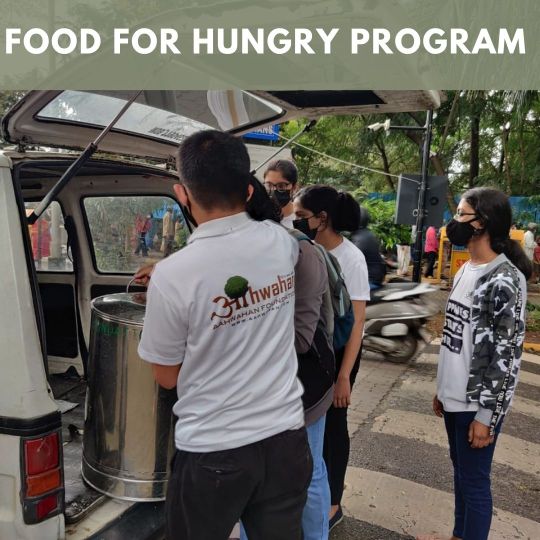

India stands at rank 2 in the world population statistics, having more than 2 billion population only slightly less than that of china who stands at number 1 position, but India beats all when compared to population density. Packing a large number of people in the same area, not all people have an equal share of land and economic wealth. India has a good total economic growth where all the world leaders acknowledged us as an emerging new world power country, but sadly it's mostly to the top less than 1% of rich people of our country contributing to huge in our GDP. When we remove the rich people’s wealth from our GDP, we see how the major population is suffering from poverty and low income compared to the countries which stand equal to us in the development order.
Food is the most basic need of any citizen of any country and essential for survival and in women the cause of premature delivery. India is the home of the world's largest people hungry and we rank 1st in the world hungry index. Which barely highlights the people’s real needs. But luckily, we have room for the greatest number of NGOs working towards satisfying this basic need of people and providing food to all in need. Here we have NGO from Bangalore the "Aahwahan Foundation" doing better work than all. They have initiated a program for the complex issue called – Food for the hungry. The foundation is also known as one of the Best NGOs in Bangalore and is appreciated all over the country for their remarkable contribution to feeding thousands of people under the feed India association. Their program feed for hungry is the most popular and successful campaign.
The Program has proved to resolve the malnutrition amongst children due to low food nutrition intake needed and also my issue related to food scarcity. All children, Men, Women, elderly taking good advantage of this program. This program is severing the good deed all over the country, they have completed this drive-in in Noida, Guwahati, Patna, Pune, Mumbai, Chennai, Gorakhpur, Hyderabad, Chandigarh, Vishakapatnam, Bhuvaneshwar, Punjab, Kerala, Bangalore and now reaching every corner of India.
And as per the founders of Aahwahan Foundation - Mr. Braja Kishore Pradhan, Nitesh Kumar, and Astrologer Vinayak Bhatt, they have severed over 70,000 Meals all over the country and are currently severing more in Chandigarh, Vishakhapatnam, Bhubaneshwar, Punjab, Kerala. They just do not provide the cooking food but also ration to people who can’t afford basic food. These food bags provided by Foundation contained mostly pulses, rice, flour, salt, sugar, spices, and cooking oil. By seeing the success of this program Aahwahan Foundation has started free food supplies in hospitals as well. During the times of covid lakhs of people were helped in terms of medical emergencies and with food packets to cover a maximum of their pain into relief.
All This concludes that it is a major step toward solving the major problem of malnutrition in children lower in the rate of amateur delivery of children and getting our future minds better, they could do better jobs and contribute to the economy help it grow further and lower the hungry rate in our ever-growing population.
We result from others joining the same cause and following the step laid by Aahwahan Foundation and supporting their program – Feed for the hungry by donating. We will reach out to every person in need through Aahwahan Foundation not only in feeding people but also in helping in education, health wellbeing, agriculture, and many more. As a society and firstly as humans it is our duty to help people in need and grow equally together.
1 note
·
View note
Link
NEW DELHI (IDN) – On February 6, protesters blocked roads at an estimated 10,000 spots across India as part of the ongoing movement against the new farm laws enacted by the national government last year. For over two months, the most populous democracy in the world has witnessed what is being called one of the biggest protests in human history.
Hundreds of thousands of farmers have been rallying against three new laws that have thrown open the agriculture sector to private players. Protesters feel the legislation will allow a corporate takeover of crop production and trading, which would eventually impact their earnings and land ownership.
The movement has overcome regional, religious, gender and ideological differences to build pressure. Leftist farm unions, religious organisations and traditional caste-based brotherhoods called khaps, which make pronouncements on social issues, are working in tandem through resolute sit-ins and an aggressive boycott of politicians.
India’s right-wing government led by Prime Minister Narendra Modi of the Bharatiya Janata Party, or BJP, pushed the laws through the parliament in September 2020, despite lacking a majority in the upper house and agriculture being in the jurisdiction of state governments. The protest is a response to the lack of respect for parliamentary democracy and federalism, but its main focus is the pervasive corporate influence on governance.
After limits on corporate contributions were removed and allowed to be made anonymously, 8.2 billion dollars was spent on Indian parliamentary elections in 2019, which exceeded how much was spent on the U.S. election in 2016 by 26 per cent. Most of this money came from corporations and the BJP was the primary recipient.
Farm crisis is the fuel
Farmers are a large electoral block in India, with half the population being engaged in agriculture. No political party can afford to offend them publicly even though policymakers have done little to increase farm incomes and address their indebtedness. Around 300,000 farmers died by suicide between 1995 and 2013, mostly due to financial stress. In 2019, another 10,281 farmers took their lives.
Indian farms are mostly family-owned, and the land is a source of subsistence for millions. Around 86 per cent of farmers, however, till less than five acres while the other 14 per cent, mostly upper castes, own over half of the country’s 388 million acres of arable land.
Farmers in a few north Indian states were able to consolidate their holdings through increased incomes with the introduction of irrigation, modern seeds, fertilisers, machines, market infrastructure and guaranteed price support from the government during the Green Revolution in the 1960s.
But rising input costs and climate crisis have adversely impacted the profits there as well. In Punjab, the most agriculturally-developed state, for instance, the input costs of electric motors, labour, fertiliser and fuel rose by 100 to 290 per cent from 2000 to 2013, but the support price of wheat and rice rose by only 122 to 137 per cent in the same period, according to a government report. Heavy use of chemicals, mono-cropping and farm mechanisation have damaged the soil, affecting productivity and forcing farmers into debt.
Strength and strategy
Punjab saw widespread protests as soon as the laws were enacted. Farmers occupied railway tracks and toll plazas on major roads besides corporate-owned thermal plants, gas stations and shopping malls. Scores of subscribers left Jio, the telecom service owned by the top Indian businessman perceived to be close to Prime Minister Modi.
Farm unions also held regular sit-ins in front of the houses of prominent political leaders forcing an important regional party to leave the national government alliance. Several state leaders of the ruling party resigned from their posts as well. Similar scenes played out in the neighbouring state of Haryana, where leaders were publicly shamed and the helicopter of the elected head of the government was prevented from landing for a public meeting after farmers dug up the helipad area.
In November, thousands of farmers drove their tractor trolleys towards the national capital as they played protest songs by celebrity singers. Stocked with rations, clothing, water and wood for months, they braved tear gas shells and water cannons used by the police along the way. Powerful tractors pushed heavy transport vehicles, concrete slabs and barbed wires that the administration had placed en route out of their way.
Open libraries and medical camps were set up and volunteers offered their skills, ranging from tailoring to tutoring children. Besides speeches by the farm leaders, cultural performances, film screenings and wrestling bouts became a regular feature. More farmers poured in with each passing day.
“These occupations are not just a reaction of wronged citizens who have set out to reform the Indian parliament or assert dissent. Rather, they form an important stage in a still-unfolding narrative of militant anti-capitalist struggle,” wrote Aditya Bahl, a doctoral scholar at the John Hopkins University who is archiving the peasants’ revolts that took place in Punjab in the 1960s and ’70s.
The Indian Supreme Court suspended the implementation of laws and formed a four-member expert committee on Jan. 13 to look into the issue. Farmers have, however, refused to meet the committee members, alleging that many of them have already written or spoken in favour of the laws.
The protests are not only targeting domestic companies and political figures. Farmers have also burnt effigies of Uncle Sam, the World Trade Organisation and IMF, signifying the influence of global trade over domestic agricultural policies. Developed countries have been pressuring India for last three decades to open up its agriculture sector to multinational players by slashing subsidies and reducing public procurement and distribution of food grains to the poor.
Protesters are also seeking a legal right to sell their produce at a guaranteed price. The Indian government usually declares a minimum support price on various crops based on the costs of their production, but only a fraction of the produce is procured at that rate. In the absence of government procurement facilities in their areas, most farmers have to settle for a lower price offered by private traders. A law would make it mandatory for private players to buy the produce at a declared price.
“If Indian farmers are able to get the law on guaranteed price passed through their current agitation, they will become a role model for farmers across the world living under heavy debts,” Sharma continued. “India should put its foot down at the WTO and create much-needed disruption in the world food trade policy for the benefit of the global agriculture sector.”
The movement grows
The BJP-led national government has faced numerous protests over the last six years of its rule..... The country has dropped 26 places in the Democracy Index’s global ranking since 2014 due to “erosion of civil liberties.”
This is the first time peasants have been galvanised in such large numbers against the government. The government has already held 11 rounds of negotiations with farmers’ representatives and offered to suspend the laws for one and a half years on Jan. 20. But farmers are not budging from their demand of the complete repeal of the laws and legal cover for the selling of their crops at a guaranteed price.
On January 26, which marks India’s Republic Day, 19 out of 28 states witnessed protests against the farm laws.
In Delhi, however, a plan to organise a farmers’ tractor march parallel to the official Republic Day function, went awry. A group of protesters clashed with police at multiple spots and stormed the iconic Red Fort, a traditional seat of power for the Mughals, where the colonial British and independent India’s prime ministers have also raised their flags.
The protesters unfurled banners of the farm unions and Sikhs – one of the minority religious groups and the most prominent face of the protests. Mainstream media and ruling party supporters used the opportunity to blame the movement for desecration and religious terrorism. Security forces charged sleeping farmers with batons at one location, filed cases against movement leaders, allowed opponents to pelt campaigners with stones, arrested journalists and shut down the Internet.
The attacks, therefore, ended up lifting the flagging morale of the farmers and helped the movement gain even more supporters, who shunned the government and media narrative. Massive community gatherings of khaps were organised at multiple places over the next few days, extending their support to the protests and issuing a boycott call for the BJP and its political allies.
Mending fault lines
The movement has also been able to overcome regional and gender divisions, and is trying to address caste divides.
The states of Haryana and Punjab are often at loggerheads on the issue of sharing of river waters. Haryana was carved out of Punjab on linguistic lines in 1966, but most of the rivers flow through the current Punjab state. Haryana has been seeking a greater amount of water for use by its farmers, while Punjab’s farmers oppose the demand, citing reduced water flow in the rivers over the years. The current protests have united farmers for a common cause, helping them understand each other even though opponents have made attempts revive the water issue.
Women have also been participating in the protests in large numbers. They are either occupying roads on Delhi’s borders or managing homes and farms in the absence of men, while taking part in protest marches in villages.
“Earlier, we were able to rally only 8,000-10,000 women for a protest. Today that number has swelled to 25,000-30,000, as they recognised the threats posed by the new laws to the livelihoods of their families,” said Harinder Bindu, who leads the women’s wing of the largest farm union in Punjab. “For many women, this is the first time they are participating in a protest, which is a big change because they were earlier confined to household work. Men are getting used to seeing women participate and recognising the value they bring to a movement.”
“When women members participate in sit-ins, men manage the house. I feel this movement will bring greater focus on women’s issues within the farming community – one of which is the need to support the widows of farmers who died by suicide due to financial constraints.”
In Punjab, less than four per cent of private farmland belongs to Dalits, the lowest caste in the traditional social hierarchy of India, even though they constitute 32 per cent of the state’s population. They often earn their livelihoods through farm work or daily wage labour. Even though Dalits have a legal right to till village common land, attempts to assert that right often lead to violent clashes with upper-caste landlords who want to keep it for themselves. Dalits are waging similar battles across India. Researchers recorded 31 land conflicts involving 92,000 Dalits in 2019. A few of the farmers’ unions have supported and raised funds for Dalit agitations in the past.
The movement is gradually encompassing other rural issues beyond the farm laws. In the state of Maharashtra, for instance, thousands of tribal people travelled to the capital Mumbai on Jan. 23 to extend support to the farmers. They also asserted their own long pending demand for land titles under the Forest Rights Act, which recognises traditional rights of scheduled tribes and other forest dwellers on the use of land and other forest resources.
* Manu Moudgil is an independent journalist based in India. He tweets at @manumoudgil.The original version of this article was published on Waging Nonviolence under the title ‘India’s farmers’ protests are about more than reform – they are resisting the corporate takeover of agriculture’.
#India#modern India#south asia#2021#agriculture#food politics#international politics#activists#movements#indian farmer protests#indian farm reforms 2020#indian agriculture#Punjab#grassroots movements#farmers#sex and gender in south asia#Forest rights act#Narendra Modi#BJP
1 note
·
View note
Text
Smokes of death
Sahiwal Coal Power Project in Qadirabad, Sahiwal Punjab is a mega coal project that is part of the China-Pakistan Economic Corridor (CPEC). The purpose of this project has been to overcome the energy shortage in Pakistan and both governments were to complete the project with an investment of $1.8 billion.
Here arises a question. While it is all good that Pakistan does need such projects to fulfill its growing energy needs, but at what cost? Millions are at risk of flooding already due to the glacier melting that is underway as a result of the government’s lack of consideration to environmental prospects of policymaking as well as no policies being drafted to check the an increased downpour of water as a result. The little word of warning systems being installed funded by the Green Climate Fund in the 24 valleys in northern Pakistan between 2018 and 2022 is also yet to be completed because of the differences between the partners- UN Development Programme-Pakistan and the Federal Ministry for Climate Change.[1] The ongoing situation with regards to COVID-19 and the shift in priorities has only led to further ignorance.
A lot of you might be wondering why is this article targeting the Sahiwal energy project. The answer to that is that Sahiwal is situated in the most fertile belt of land to existing in Punjab and people living around Sahiwal as a result have been indulged in farming generationally. Constructing such a mega project in the middle of this fertile belt has led to people complaining about drinking water pollution as well as a great loss of fertile land. Doctors working in a medical camp set up in the region in October 2019 also reports that there has been a significant increase in cases of people suffering from breathing problems.[2]
Moving on, let's talk about coal as a source of energy. It is no hidden knowledge that it is one of the most hazardous and polluting forms of energy is known to man. For the sake of perspective, Coal-fired power plants emit 84 of 187 hazardous air pollutants identified by the U.S Environmental Protection Agency [3]. So while other countries are finding ways to decrease their carbon footprint, Pakistan was able to construct a coal-fired power plant on the most fertile belt of land in the country with the assistance of China, one of the largest exporters of renewable energy and equipment related to sustainable energy purposes[4]. That would be probably the most ironic line you came across today.
We can go on and talk about how bad this can be statistically but what does it translate to for the people of Sahiwal who might not be able to understand the language in which their lives and those of their future generations have been put in jeopardy. The after-effects of all this ranging from disease and unsafe drinking water might in the future lead to people leaving the area and settling elsewhere which might consequently result in a dramatic loss of fertile, wealth-generating community associated with the land in question. The increased emissions boosted by this project would lead to an accelerated glacier melting, rise in temperatures, and countless other impacts on the nation for which the government has little planned.
We can state for the sake of the fact that the whole project is now a thing of the past that the government overlooked the future for the short-term benefits of the project but it is important for it to be debated upon that what actually went wrong? Who were the stakeholders and policymakers from the Pakistani side that could not see the clear pothole of future losses while making the decision on the matter? The way most people see it is that the ordinary people, in this case, the farmers of Sahiwal had no say in the whole decision- making process. They were not educated about the possible outcomes of the project nor were they empowered enough to do something about it even if they were sufficiently aware of the impending crisis. The unfortunate result of all this is that while the elitist part of our society is educated about the climate issue, it chooses to ignore it because they like to remain in the a bubble that a coal powerplant in Sahiwal is a problem of the poor farmers who are already destined to live a life of poverty and environment should be the least of their concerns. However, they missed the point that sooner or later the destructive plant that sprouts out of their seeds of ignorance will in a matter of years entangle the whole country.
[1] https://www.aljazeera.com/news/2020/06/millions-risk-melting-pakistan-glaciers-raise-flood-fears-200609033202702.html
[2] https://www.dawn.com/news/1522388
[3] https://toxtown.nlm.nih.gov/sources-of-exposure/power-plants#:~:text=Coal%2Dfired%20power%20plants%20emit,to%20the%20National%20Toxicology%20Program.&text=Exposure%20to%20coal%20power%20plant,%2C%20skin%2C%20and%20breathing%20passages.
[4] https://www.eria.org/RPR_FY2012_No.26_chapter_4.pdf
1 note
·
View note
Text
Headlines
Public Impeachment Probe Hearings to Start Next Week--Chairman
(Reuters) The U.S. House Intelligence Committee will kick off a series of open hearings in its impeachment inquiry into Republican President Donald Trump next week, the panel’s Democratic chairman said on Wednesday.
Trump urges war against Mexican cartels
(Foreign Policy) After an attack by gunmen in Mexico killed nine American citizens on Monday, Trump has offered to cooperate with the Mexican government to root out drug cartels in the country. On Tuesday, Trump spoke with Mexican President Andrés Manuel López Obrador by phone and urged him to do more to combat cartel violence. It’s possible the United States could mount a pressure campaign--as it did with migration--to force a security policy change.
Trump’s travel restrictions
(Foreign Policy) U.N. delegates from countries with poor relations with the United States--including China, Cuba, Iran, Nicaragua, and Syria--say they are increasingly subjected to visa denials, airport checks, and other forms of harassment when traveling to the United States. While the tactic isn’t new, experts say the Trump administration is acting on weak legal grounds.
Colombia Defense Minister Resigns Amid Pressure Over Bombing Casualties
(Reuters) Colombian Defense Minister Guillermo Botero said on Wednesday he would resign in the midst of mounting political pressure over alleged extrajudicial killings and the threat that Congress could force him out.
Bolivia’s Morales defies opposition protesters
(Foreign Policy) Bolivian opposition figure Luis Fernando Camacho has promised to return to the capital, La Paz, today to demand the resignation of President Evo Morales after being blocked from doing so on Tuesday. Camacho, who has become a leader of the opposition movement, would join thousands of protesters calling for the president to step down after he won the October vote amid allegations of election fraud. Morales has so far defied the protesters, awaiting the results of an election audit later this month.
Chile prosecutor seeks to investigate 14 police officers for alleged torture of protesters
(Reuters) A Chilean prosecutor on Wednesday said he would seek court approval to investigate 14 police officers for allegedly torturing protesters during almost three weeks of intense unrest and rioting in the country.
France, under pressure from right wing, toughens stance on immigration
(Reuters) France is to clear out some migrant tent camps, impose quotas for migrant workers and deny newly-arrived asylum seekers access to non-urgent healthcare, in a drive to show voters President Emmanuel Macron is heeding their concerns about immigration.
Poor Air Quality Closes Schools in Eastern Pakistan
(AP) Dangerously poor air quality has forced Pakistan’s government to close all schools in Lahore, the capital of eastern Punjab province and home to 11 million people.
Iraqi security forces break up protests
(Reuters) Iraqi security forces fired tear gas and live rounds into the air to disperse protesters in central Baghdad on Wednesday, killing one person, as the biggest wave of anti-government demonstrations in decades spread out across the capital.
Israel Aiding Syria’s Kurds, Advocating for Them With U.S.--Official
(Reuters) Israel is assisting Syrian Kurds battered by a month-old Turkish incursion, seeing them as a counterweight to Iranian influence and advocating for them in talks with the United States, the deputy Israeli foreign minister said on Wednesday.
Pro-Beijing lawmaker in Hong Kong stabbed while campaigning
(AP) An anti-government assailant stabbed and wounded a pro-Beijing Hong Kong lawmaker who was election campaigning Wednesday, police said, in another escalation of violence surrounding the protests demanding political reforms in the semi-autonomous Chinese territory. Junius Ho has become a hated figure by the protesters over his alleged links to violence against them. After receiving initial medical treatment, Ho told reporters the knife had been blocked by his rib cage and that he was left with a minor 2-centimeter-deep (0.79-inch-deep) wound.
Ten killed in attack on Semafo convoy in Burkina Faso
(Reuters) Ten people were killed and dozens more are wounded and missing after an attack on a convoy transporting workers of Canadian gold miner Semafo in eastern Burkina Faso, three sources said on Wednesday.
Zimbabwe’s severe drought killing elephants, other wildlife
(AP) At least 105 elephants have died in Zimbabwe’s wildlife reserves according to the Zimbabwe National Parks and Wildlife Management Authority. Many desperate animals are straying from Zimbabwe’s parks into nearby communities in search of food and water. The drought parching southern Africa is also affecting people. An estimated 11 million people are threatened with hunger in nine countries in the region, according to the World Food Program, which is planning large-scale food distribution. The countries of southern Africa have experienced normal rainfall in only one of the past five growing seasons, it said.
1 note
·
View note
Link
Amandeep Hospital is no less than a blessing for many parents who were on the verge of losing their child’s bright future. With the tireless efforts of the health professionals and free of cost cleft lip and palate treatment in association with Smile Train, this hospital has been continuously improving lives for better.
The best doctors and surgeons in Amritsar have given a new life to another child. Let us help you have a deep insight into the life story of the child and his parents.
Hemraj Kumar was a laborer by profession in village Mathar p/o Khundian, District Kangra in Himachal Pradesh. He & his wife Dholi Devi used to remain anxious and depressed due to their son Sagar and his future, who had cleft lip and palate.
They were economically poor and had lost all hopes of their son getting a normal face and a normal living. As they lived in difficult hilly terrains where medical facilities are not available readily, they had to face major problems. One fine day when Hemraj was returning from his work, he saw a poster in the local market showing photographs of a cleft lip patient which depicted the comparison of the patient’s condition with before surgery and after surgery images.
The poster was about the Smile Train Accredited Hospital in Punjab sponsored camp in their area. He decided to visit the camp with Sagar and there he was advised by the doctors to visit Smile Train accredited center,
best plastic & cosmetic hospital in Amritsar - Amandeep Hospital where such cases are done routinely and all these procedures are done by a team of highly qualified and specialized doctors and that too free of cost through the NGO named Smile Train.
He came to Amandeep Hospital and here the expert team of surgeons examined Sagar.Both the parents were delighted as now they could bring up their child like other children in the society. They were overwhelmed to return back to their place and start a new journey of life.Such is the power of our treatments and we strive to save more lives.If your child is facing the same then contact us immediately for effective treatment.
#Joint Replacement#best knee replacement surgeon in amritsar#best knee replacement hospital in amritsar#knee replacement hospital in amritsar#knee replacement in amritsar#plastic & cosmetic surgery#plastic & cosmetic surgery in amritsar#plastic & cosmetic surgery hospital in amritsar#Joint Replacement Hospital in Amritsar#Joint Replacement Hospital
1 note
·
View note